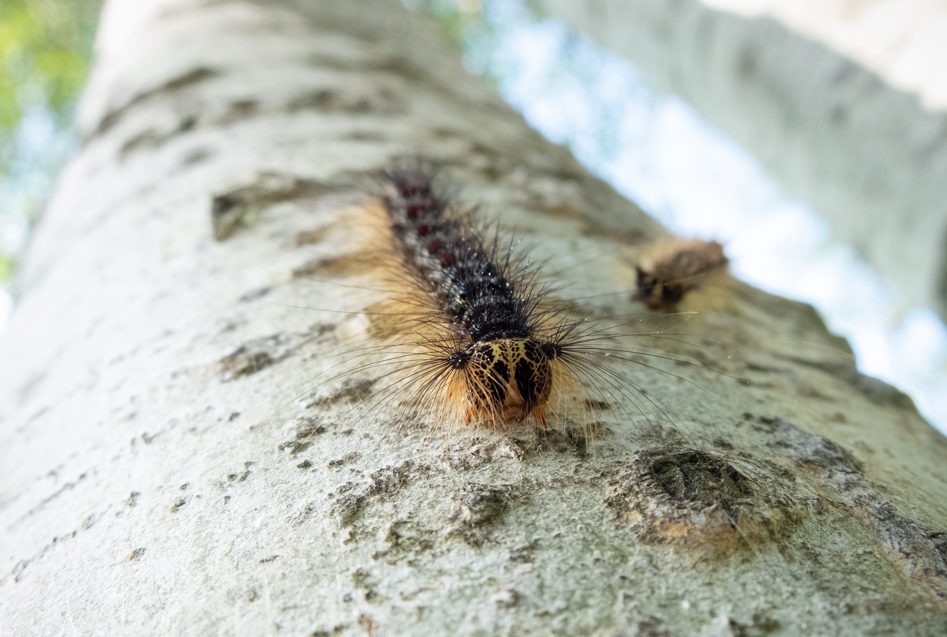WELLINGTON COUNTY – Following what bordered on an invasion last year, the LDD (Lymantria dispar dispar) moth, also known to county residents as the European Gypsy moth or spongy moth, is returning for the 2022 season.
An invasive caterpillar native to Europe, and first detected in Ontario in 1969, the LDD moth was responsible for defoliating almost 1.8 million hectares of trees last year.
It was a significant increase over the 586,385 defoliated hectares in 2020, and 42,000 in 2019, according to surveys done by the Ministry of Northern Development, Mines, Natural Resources and Forestry.
Last year, defoliation in the Guelph district, including Wellington County but reaching to the province’s west coast and into the Niagara Peninsula, totalled 113,877 hectares.
The first significant defoliation phenomenon occurred in 1981, with the pest having evolved to a state of naturalization since, meaning there exists a likelihood for additional population surges, as were seen over the previous two years.
Areas with oak, maple, poplar and willow trees are most susceptible, however, in 2021, the caterpillars began feeding on conifer species in a rare sign of desperation for food.
Last year, the ministry observed the number of egg masses on trees as a way to anticipate what this summer will bring.
There are small portions of the Guelph district that are anticipated to experience “severe” defoliation, meaning upwards of 75 per cent of a forest stand could be eliminated.
Most healthy trees can handle a couple years of caterpillars gorging on their leaves, but following several years the stress can kill trees and lead to negative consequences on overall forest health, such as a loss of tree diversity needed to sustain a healthy ecosystem.
Natural predators such as mice and birds eat caterpillar pupa, and parasitoid wasps inject their eggs into caterpillar egg masses, parasitizing up to 30 per cent of the egg masses annually.
The ministry confirmed observing predation and found “small pinholes in egg masses” associated with the wasps.
“Aerial surveys are scheduled to occur mid to late June this season to record defoliation levels for 2022,” stated ministry spokesperson Anita Tamrazi in an email.
Data will be made available in the fall.
DIY burlap kits
Caterpillars can be prevented from crawling along a tree trunk and into foliage by wrapping burlap cloth around a tree trunk, tying rope/twine around the centre, and draping the cloth in half, over the rope.
Caterpillars will congregate under the overhang where they can be collected and submerged in a bucket of soapy water for days until they die.
The hairs on the caterpillar are known to cause skin reactions and gloves are recommended.




